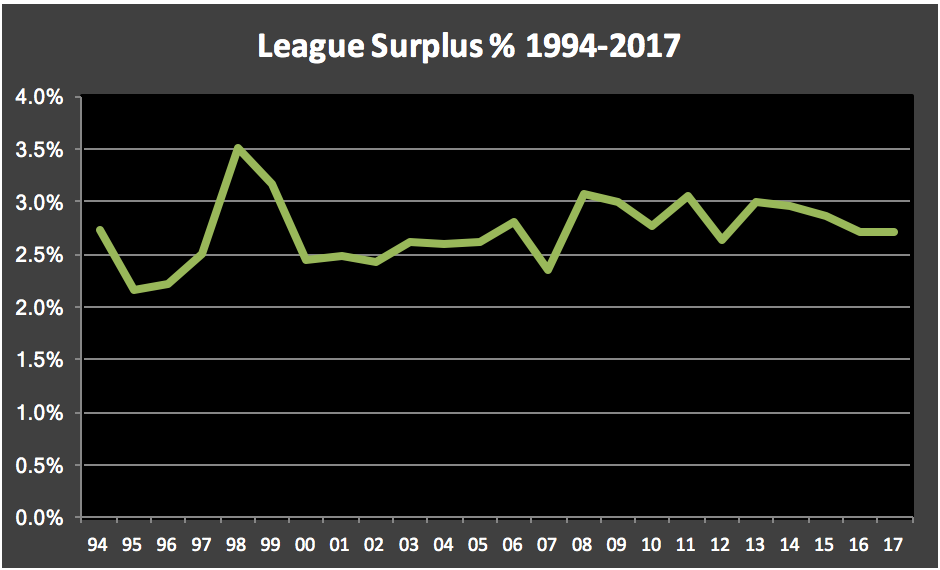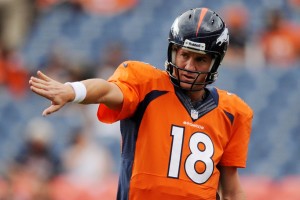Adam Steele is back for another guest post. And, as always, we thank him for that. You can view all of Adam’s posts here.
Within the analytics community, we seem to have reached a consensus that ANY/A is the best box score metric for measuring passing efficiency. Over at the Intentional Rounding blog, Danny Tuccitto tested the validity of ANY/A using a technique called Confirmatory Factor Analysis. You can read his three part analysis here, here, and here. Essentially, he discovers that Y/A and TD % are valid statistics for measuring QB quality, while sack % and INT % are not. At first I was skeptical, but after some pondering I came up with a half-baked theory of why this might be true:
As we evaluate the potential for an athlete to succeed in professional sports, there are two kinds of statistics: Qualifying and Disqualifying. In the case of quarterbacks, I define a qualifying statistic as a minimum threshold the player must meet to even be considered NFL worthy. If we deconstruct ANY/A into its four components, Y/A and TD % emerge as qualifying statistics. In today’s NFL, I estimate that a QB must possess a true talent level of at least 6.0 Y/A and 2.5 TD % to deserve a roster spot. There are very few people in the world who can reach those thresholds against NFL caliber defenses (my best guess is around 100). With these two simple statistics, we’ve already weeded out the vast majority of quarterbacks from ever playing in the NFL.
Next, we turn to sack % and INT %, which are disqualifying statistics. By themselves, neither of these skills qualify a QB to play in the NFL. Anybody can avoid sacks or interceptions if they’re not worried about gaining yards. However, the inability to avoid sacks or interceptions will disqualify a QB from the NFL, regardless of how high his Y/A and TD % might be. I estimate these limits as roughly a true talent 12% sack rate and 4.5% INT rate. The population of quarterbacks who can stay under these limits AND perform above the minimum Y/A and TD % is very small. In most years, there aren’t enough of these QB’s to fill the 32 NFL starting spots. Among quarterbacks who receive significant NFL playing time, there is a strong survivorship bias for the disqualifying statistics of sack % and INT %, as the quarterbacks who make too many negative plays have already been weeded out of the sample. Given that Y/A and TD % are far rarer skills with no upper limits, these two statistics are the true measuring stick at the NFL level.
To test this theory, I created a very simple metric called Positive Yards Per Attempt (PY/A). It’s just passing yards plus a 20 yard bonus for touchdowns, divided by pass attempts (which does not sacks). I then converted PY/A into a value metric by measuring it relative to league average (RPY/A) and VALUE above average by multiplying RPY/A by attempts. We already have these variations of ANY/A (that is, RANY/A and VALUE), so comparing the two metrics is very straightforward. Since the merger, there have been 1,423 QB seasons of with least 200 dropbacks. This table lists the top 100 seasons of PY/A VALUE, as well as the ANY/A VALUE and rankings for these players. The “Diff” column signifies the gap in ranking between the the two metrics, with a positive number indicating a QB who is favored by PY/A and negative number favoring ANY/A.
This list makes a strong case for the validity of PY/A. It’s populated by the greatest QB seasons of all time at the top, and filled out by a number of other notably great and very good seasons. There are a few head scratchers (most notably Lynn Dickey at #9), but for the most part it’s a very credible list that closely mirrors the ANY/A rankings. That’s the point, really. When we remove sacks and interceptions from ANY/A, it doesn’t lose much accuracy, if any. At first glance, I was concerned that PY/A systematically overrates certain quarterbacks and underrates others. That’s probably true to a certain degree. However, I would argue that ANY/A has the same issue, except it’s a different set of quarterbacks who are over- and underrated by it. The true balance almost certainly lies somewhere in between the two metrics. FWIW, the correlation between RPY/A and RANY/A is a robust 0.877, with an r-squared of 0.769.
Now lets look at the other end of the spectrum – the 100 worst PY/A VALUE seasons since 1970.
I actually find the Worst list even more validating of PY/A than the Best list. When we think of bad quarterbacks, most us reflexively focus on quarterbacks who make a lot of mistakes and sink their teams in obvious and memorable ways. And this list is filled with conventionally terrible quarterbacks. But remember, nearly all of their negative plays have been removed, so it’s not their mistakes putting them on the list. It’s their impotence. These guys couldn’t make plays or move the ball down the field, killing their teams slowly and agonizingly. At the very top (err, bottom), we find Derek Carr’s rookie year. A lot of fans and pundits classify Carr as a budding franchise QB who showed “flashes of potential”. Actually no, he showed the exact opposite. While the younger Carr avoided sacks and interceptions at a reasonable rate, his Y/A was absolutely pathetic. Even accounting for his lousy supporting cast, that is a major red flag. It’s much easier for a young QB to reign in his mistakes than it is for him to suddenly learn how to make positive plays down the field. Blake Bortles fits precisely the same troubling profile, so I don’t have much hope for the class of 2014.
Does this change your feelings about ANY/A? Do you think Danny and I are wasting our time? If anyone else has created their own passing metric using basic stats, I’d love to hear about it.




